NOTE: This article contains spoilers for the entire main story of Dawntrail, as well as references to events from all previous Final Fantasy XIV expansions.
When it was announced that Endwalker would bring the end of Hydaelyn and Zodiark arc to Final Fantasy XIV, many MMORPG fans were apprehensive about how the game could continue after the end of its main saga, and as the pieces came together, the hype for Danwtrail has grown considerably.
Dawntrail takes the Warrior of Light and the Scions of the Seventh Dawn to a new region of the world west of Eorzea, Tural, where they follow the dispute between four warriors for the throne of Tullyiollal and the title of Dawnservant, the ruler of the region. They ally with Wuk Lamat, the current regent's daughter, to help her ascension to the throne.
This competition serves as a means of preparing FFXIV's groundwork for the expansion's events, and in this article, we present an analysis of the game's narrative, focusing on its lore and how it fits in with themes already covered in other expansions, in addition to understand what exactly Dawntrail seeks to “talk” to its interlocutor.
Viper and the change of narrative focus
As a personal note, there is an interesting point to mention about Dawntrail and one of the new jobs, Viper, considered the “canonical” job in the expansion's trailer.
The protagonist transitioned between Dark Knight and Paladin in Shadowbringers and Endwalker, two Tanker jobs that, in their mechanics, place him in a central role during Duties and bosses: the one who attracts the attention of enemies and focuses the combat around him, while his allies focus on healing or damaging monsters.
From a narrative perspective, this role makes sense because he gained more importance in the plot beyond just being a “hero”: in Shadowbringers, he was the only one capable of bringing night back to the world, and in Endwalker, his origins are revealed and put him center stage to save the world from the Final Days.

In Dawntrail, however, our character, in the trailer, becomes a Viper, a Melee DPS, that is, he takes on a job mechanically similar to that of characters like Estinien, who became a wanderer after Endwalker. And when we arrive at Tural for the first time, he stops being the “savior of our star” and becomes just an adventurer that few in that region has heard of.
The expansion respects this detail at all times: its plot is not about the Scions or the Warrior of Light, it is about Tural - its people, their conflicts, their needs, their legends, cultures, cuisine and everything in between. The star's saviors no longer have a central role and become observers, companions of one of the Dawnservant candidates on her journey.
As someone who usually prefers to play solo, I have always prioritized Tanker classes to play Final Fantasy XIV MSQs. In Dawntrail, I decided to change my main job from Gunbreaker to Viper because it “made sense” with the story I built for my Warrior of Light (just as, incidentally, it also made sense to transition to Gunbreaker at the end of Heavensward), and the mechanical differences around this made the experience even more immersive because, in the end, the person who took the position that was previously mine was none other than the true protagonist of the story, Wuk Lamat.
Wuk Lamat: The Protagonist of Dawntrail
The entire focus of Dawntrail's narrative is focused on the new character that the group follows throughout the plot, Wuk Lamat, one of the adopted children of the current Dawnservant, Gulool Ja Ja.
There's a popular saying among some FFXIV fans about how the game, in general, is a "great anime." Part of its plot elements, rhythm, development of events and even characters follow certain very common stereotypes of famous anime series, especially from (and not limited to) the shonen and seinen genres.

Wuk Lamat is no different. Despite being Gulool Ja Ja's adopted daughter, she is, according to the people of Tural, the least qualified to succeed her father on the throne because she does not have the inherent qualities of her brothers: she is not as strong and ambitious as Zoraal Ja is not as smart and connected as Koana, the other adopted child.
Consequently, she doesn't have many supporters outside a few older people who trust that she will keep things the same way as her father and thus avoid major conflicts and wars in Tural occasioned by very sudden changes, while her brothers have strong support from those expecting more opportune market routes, the technological progress of the continent, or its territorial expansion into more prosperous lands.
What Wuk Lamat has, however, is positivity and absurd willpower, which reminds us of characters like Naruto or Black Clover's Asta. She also carries a gigantic sense of empathy and understanding that, in some way, places her in a privileged space in the competition when compared to her brothers, who are certain of their goals and the changes they aim for Tural as Dawnservants.
These elements end up making her an excellent protagonist for the story. After all, her propensity to listen to others and understand what they need makes players know more about Tural, which is the objective of the first third of the game, after all. And then, as events unfold, we see her empathy remain even against her enemies or the enemies of her people, making her one of the examples of what constitutes a good ruler - another very striking theme of the expansion.
The Pieces of the Political Game and Ideals of Society
Dawntrail begins as a political plot. From the moment we arrive in Tullyiollal, we are presented with a people with cultures significantly different from those we see in Eorzea, about to undergo a succession ritual: their ruler, Gulool Ja Ja, is aging, his second head, responsible for his reason, is dormant, and the time has come to choose a new Dawnservant for Tural.

Gulool Ja Ja is essentially a legend. He achieved the feat of uniting different peoples who lived in conflicts under a single flag, making them leave the times of war behind in favor of a lasting and prosperous peace, in addition to having managed to save the region from the fearsome Valigarmanda by making the creature use its ice magic against itself.
His achievements inspire the majority of Turali people, and he presents several qualities worthy of an exemplary leader. Interestingly, his three childs and three of the four candidates for succession separately possess the exact qualities that made him so powerful.
While Turali politics is far from a democracy, it is impossible not to notice the parallels between the different visions and ideals of society of the four competitors with what we commonly see in democratic elections around our world, where the interests of the people and their rulers tend to conflict with each other due to the different needs of each region and/or person.
A Pilgrimage to Get to Know Your People
By holding the competition, which involves getting all the stones from each region and finding the Golden City, what Gulool Ja Ja planned was to make sure that his successor knows in depth the culture and needs of the Turali people, and understands their roots. cultural values and fears of past and future generations.
To achieve this, the competition is basically a pilgrimage through different regions of the continent and, with them, understanding the plurality of opinions and needs of each one - a strong point in the Dawntrail's worldbuilding and evident in the parallel of the first visit we make to the villages and regions outside the capitals: while one had to resort to its more traditional methods to bring back the life of its flora through a ritual, the other prioritized establishing the value of commercial relationships.

Generational conflict is also another important detail commonly addressed in the expansion. As the decades passed, the younger Turali began to forget the long periods of conflict that their parents and grandparents had experienced, and as such, they longed for the opportunity for change that Koana or Zarool Ja offered, while Wuk Lamat had little support among the younger people due to her lack of perspective for change.
There are several moments in which Dawntrail tries to address, in a softer way, the risks of a society forgetting its recent history and making the same mistakes of the past, and how the lack of memories of the pain of war makes younger generations less careful about it - which, in a way, end up presenting a point in Zoraal Ja's logic, but also demonstrate how much his ideals conflict with Wuk Lamat.
This search for the Stones and the competition for each of them demonstrates other needs as we progress: improvements in working conditions for artisans, the preservation of the cultural memory behind a dish of traditional food from the region, or understanding the differences between a people and others and how to reconcile them and even the need to protect the people from a great unexpected threat when Bakool Ja Ja, in one of his greedy outbursts, manages to release Valigarmanda, which ends up serving to make the three brothers put their differences aside for the greater good: defeating the creature that terrorized their people for centuries and thus saving Tural.
In many ways, the Scions' journey with Wuk Lamat on this journey is very reminiscent of Tidus' journey during Yuna's Pilgrimage in Final Fantasy X, where you are taught a lot about the world by voyagint through it, but FFXIV tends to maintain a certain familiarity with everything that was established in previous expansions: for example, the concept of memory as a means of keeping those who have departed alive coincides quite closely with Emet-Selch's last sentence in Shadowbringers, where he asks our protagonist to remember the Ascians existed.
There are other points where the previous plot has its own references and even antitheses in Dawntrail, but let's stick to the chronological unfolding of events.
The Conflict between Tradition and Progress
Another recurring theme on this journey is the conflict between tradition and progress, even when it doesn't occur in a binary way.
At first, Koana and Wuk Lamat seem antagonistic in this sense, but they end up recognizing the need for both tradition and progress for the good of their people, becoming, together, the heirs to the throne and Dawnservants.
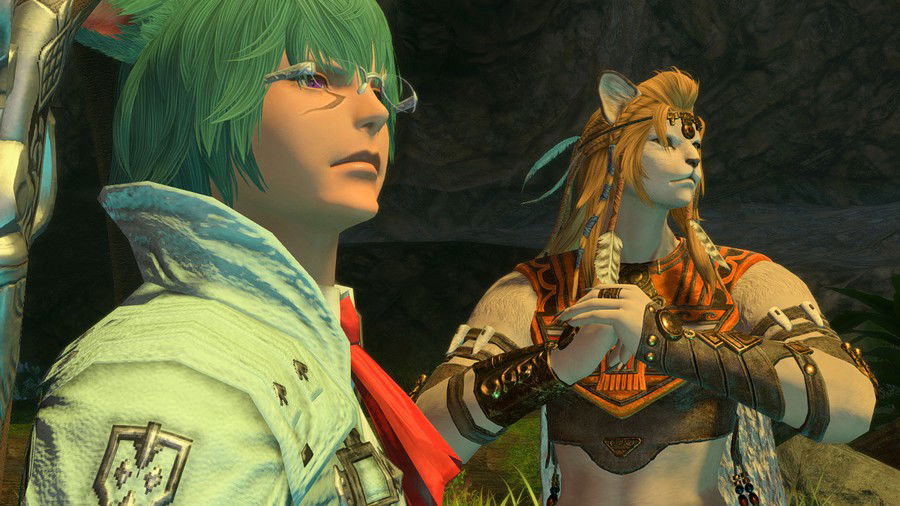
The concerns surrounding both ideals only become more evident after they join forces and the Warrior of Light goes to Xak Tural and meets the Shaaloani and the Hhetsarro, who are an allusion to the old west periods in North America, where one group created their own regions, laws and began to suffer from the causes of greed and corruption of their mining system while the other worries that with this technological advancement and the need for more natural resources to use them, they lose their space and contact with nature - an impact that, in the long term, even Koana may fail to prevent.
In addition to the two brothers, Bakool Ja Ja and Zarool Ja are two other examples of this conflict and serve as examples of going too far in either path.
As we discovered in his homeland, Bakool Ja Ja is the extreme case of following traditions too much to the point of not accepting the changes that have naturally occurred over the decades. In the region where he was raised, his people believe that only a two-headed Mamool Ja can rule Tural and deems other races as inferior - a retrograde review of a never-returning time whose only a small portion of their own people support, but that doesn't stop him from doing everything he can in an attempt to win the title of Dawnservant.
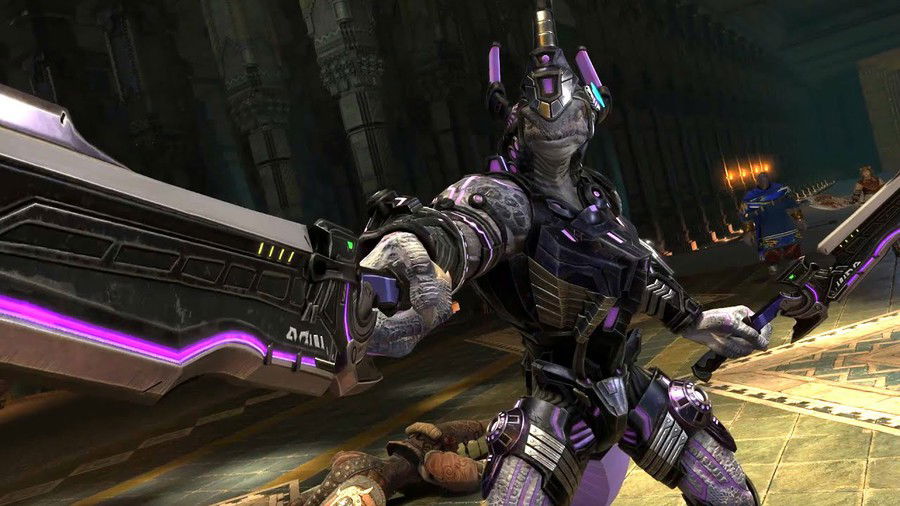
On the other hand, Zarool Ja follows a troubled path. His desire to surpass his father and become his successor eventually leads him to the gates of the Golden City where he gains access to a mysterious force imbued with high technology, accepting with open arms that new discovery to become the king and, thus, gain access to the resources and powers to invade Tural and ultimately conquer the kingdom he desired for so long - despite his respect for traditions, Zarool becomes the example of what happens when technological advancement is coupled with resentment and greed, eventually leading to ruin.
The Weight of Expectation and the Weight of Reality
Bakool Ja Ja and Zarool Ja also share another striking trait in Dawntrail: living under the weight of the expectations around them.

The fact that he is a two-headed Mamool Ja puts a huge burden on Bakool's shoulders, after all, he also carries the blame for all the other attempts to create another of his race, with hundreds of them buried in the basement of his home until he could be born and grow. This “desperation” to prove his worth and ensure that so many deaths were not in vain takes away from his judgment, putting him in shoes where he needed to fail and be humiliated by his own family to consider what he could do for his people and seek other alternatives to honor those who have already left.
Zarool Ja, on the other hand, sought a greater purpose. After all, being the blood son of the legendary Gulool Ja Ja and the culmination between the three distinct races of Mamool Ja, he was called “The Resilient” from a young age and always considered that something greater must be waiting for him - something that justified his birth against all odds.

Consequently, Zarool became estranged from his brothers and lived haunted by the self-imposed need to be more powerful than his father, surpass him in every aspect, and thus become the leader Tural deserves. His family relationships are not well addressed in the expansion, so we don't know how much this was a reflection of his upbringing, but Zarool harbored an almost irrational resentment towards his brother and sister, possibly considering them as “usurpers” of his birthright.
When faced with reality, both follow very different paths: Gulool seeks redemption and sees the possibility of creating a better future for his people, even if it is not as the Dawnservant. As hateful as his actions were, he has a great redemption arc that, while it doesn't erase the atrocities he committed, helps players sympathize more with the character and even root for him to have a position in Tural's royal guard.
Zarool, on the other hand, fails to recognize his limitations and mistakes, teaming up with a foreign kingdom to destroy his home and usurp the throne, going against the traditions established by his father. And when faced with the harsh reality that he was ultimately not strong enough, Zarool allowed himself to be consumed by his own greed until the very last moment.
While none of them take things to such extreme levels as the other contestants, Wuk Lamat and Koana also end up maturing under the harsh weight of reality on their expectations, where Koana understands that his lack of understanding of Tural's culture leaves him a step behind of his sister and, therefore, unworthy of assuming the role of Dawnservant while Wuk Lamat recognizes her lack of ability to rule alone, proposing that her brother rule alongside her.
The very union of the two as the heirs of Resolve and Reason creates expectations for the best for the majority of the people of Tural, and even with the fears of the Hhetsarro, it was expected that the coming years would be prosperous, but the arrival of a new world and its army's sudden attack, which culminates in Gulool Ja Ja's death, soon paves the way to despair.
What is the price of a soul?
This is the moment where the Scions of the Seventh Dawn take over the stage. With a mysterious new, interdimensional force, the risks that Zarool Ja poses go far beyond Tural and could easily escalate into war with the rest of the world, and so it fell to the saviors of the Star to come together and investigate the mysterious purple dome of where the enemy army left.

After a series of quests and cutscenes showing people coming together to build a train capable of resisting the defenses and barriers around the dome, part of the group and Wuk Lamat head towards the mysterious region that, in the end, was about another reflection of the world, no different from the First and the Thirteenth - but while these were dominated by the elements of Light and Darkness, this “piece” of another reflection fused to the Source was dominated by the Thunder element.
Just like the First, the notion of time is different in that small dome, and it passed much faster than in the Source's timeline: a few days meant decades inside, cities that had just been built were in ruins, the railroad tracks were oxidized.
Amidst the unexpected events, the party is introduced to Sphene, the queen of Alexandria, a kingdom that encompasses the Reflection that was coupled through an interdimensional fusion, that is, a piece of that world was connected with the Source, becoming materially part of it while, on the other hand, the region taken follows the temporality and climate of the original Reflection.
As Wuk Lamat becomes interested in exploring the culture and beliefs of Alexandrian people, we come across a dystopian vision of Tural's beliefs about memory and soul: a world that needed because of a great calamity, to advance technologically to the point of extracting souls from bodies to reuse them and, thus, ensure that people do not suffer from grief or the fear of dying before their time.
While Tural believes that people live as long as their memory exists in those who remain in the world, Alexandria presents a reality where, when they die, people's memories are completely erased, and they are treated as if they had never existed. Furthermore, their souls are extracted and thrown into a “recycling system”, where their memories, emotions and other traces of their identity are erased so that it can serve a new purpose: to be one of the reserve souls for the Alexandrian people.
Alexandria, in the past, was affected by a great tragedy that left the world in a perpetual state of lightning storm, and while technological advances were made to have a metal capable of channeling this electricity and transforming it into energy from other elements - establishing the core of its development - the greatest effort was in the study of the Soul and, mainly, in how to use it, being divided into two forms:
The first is the cleansing of the soul of someone who left to transform it into a resource. Thus, a person can have “reserve souls” and, therefore, not die from any effect other than a natural cause since, if their body dies, a reserve soul will be used to bring them back.
The second is through the "Endless", individuals who retain their memories, physical form and emotions, being reborn on "the clouds", and where they manage to take the same form with new souls, but in different bodies.
This system is so ingrained in Alexandrian culture that everything is based on the need for extra souls, even in their economy, where workers are rewarded for their efforts with a certain amount of extra souls - and as exemplified as we explore the residential district in Solution 9, it is possible to run out of reserve souls if you don't work and/or try hard enough - Souls are a basic need for Alexandria, in the same way that money and quality of life are for our world, and the kingdom adopts an extremely meritocratic view of this resource.
Souls also have another use for them: to make individuals stronger. One of the first bosses that the Scions face in the kingdom turns into a beast after the ostentatious use of souls that increase his physical capabilities, and Zarool Ja only manages to defeat his father by using them to increase his powers - however, this comes with a price: as in the Thirteenth, consuming too many souls can cause an individual to lose their sense of identity, as we see just before the final battle against Zarool.
Lives as a scarce resource
Alexandrian culture treats souls as commodities and sees them only as resources, and as such, their excessive use generates scarcity that eventually leads to fear and suffering.
With so many centuries being the current system, the use of regulators and “extra” souls to avoid mourning creates a systematic crisis in the kingdom, which is also exacerbated by Zoraal Ja's greed in accumulating souls for military use: lives are also a resource scarce and, naturally, souls become scarce.
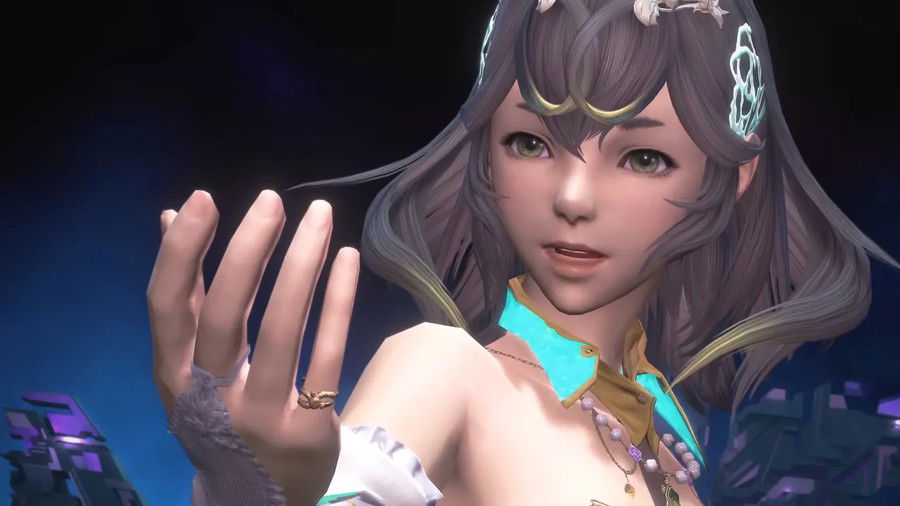
With scarcity, crises eventually come: the system doesn't become sustainable and people will receive fewer and fewer souls in addition to the world being unable to sustain itself, eventually leading to ruin. To prevent the suffering of his people, Sphene makes a deal with Zoraal Ja, where he would have access to all the war power and souls he wanted for his plan of conquest, as long as he also got the souls needed to sustain the kingdom.
That is, to save her world, Sphene is willing to invade other worlds and murder all of their inhabitants to take their souls and thus maintain the utopian paradise of her people, an act of benevolence that would eventually lead to the end of life and, ironically, would end with the ruin of Alexandria when there were no soul left to steal - the postponement of the inevitable end of a failed system.
In some ways, Sphene's objectives resemble the Ascians from the previous arc, both in the perception of ending all life to save their own world and in the concept of paradise idealized by her and which we later meet in Living Memory: a world where everyone is happy and death does not exist.
But it's not just the villain from the second half of Dawntrail who resembles the Ascians in this expansion:
“I don’t consider them to be truly alive”
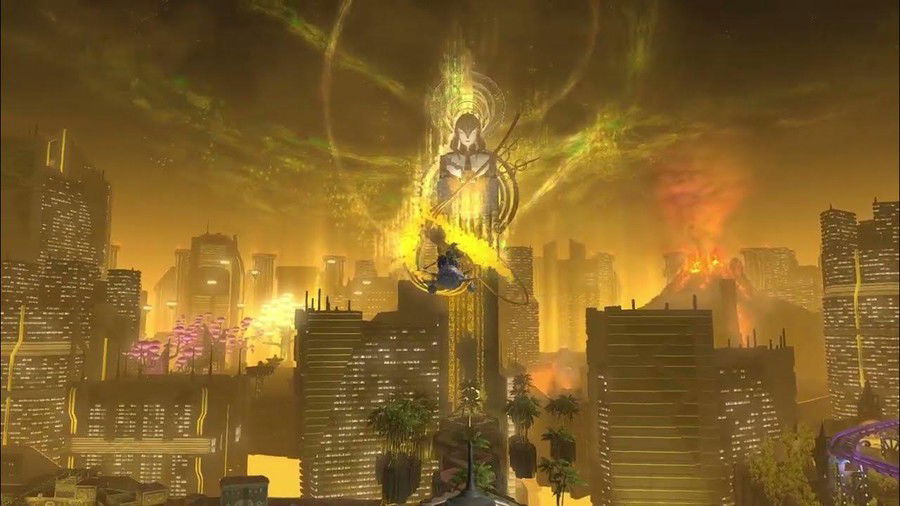
One of Emet-Selch's most famous lines in Shadowbringers is the way he justifies bringing about the Umbral Calamities at the Source and the mass genocide caused by them:
“But yes, moral relativism and all that. Case in point-- I do not consider you to be truly alive. Ergo, I will not be guilty of murder if I kill you.”
- Emet-Selch
As the phrase itself says, there is a strong moral relativism in the attitudes of the Ascians, and Dawntrail uses this same perspective to present the Scions with the same dilemma: after Zoraal Ja dies, Sphene decides to take the reins of her kingdom and make whatever it takes to save their people, entering a dimensional rift which the group later discovers leads to the highest level of Everkeep - the Living Memory, where departed souls are reunited and live in constant happiness, being an analogy to the paradise of that world, a simulation programmed to give back to the dead their moments of greatest happiness.
This world is sustained by the same system that keeps Sphene alive as the eternal queen of Alexandria and whose sole purpose is to maintain the integrity and happiness of her people. When confronted, Sphene herself admits it is too late, as she has already begun the complete integration that will eventually erase her emotions and make her do whatever is necessary to save her world.
It is in this place, too, that the group finally meets Cahciua, Erenville's mother, who is faced with irrefutable proof of her death, since only souls reside in Living Memory. She then proposes one last wish to Wuk Lamat and the Scions before the final battle: that they turn off the four terminals that support the Living Memory and, thus, allow all the Souls there to disappear and rest in peace.
The proposal, initially seen with reluctance, is soon accepted as the “right way”. In Cahciua's words, the residents there are people who should have left a long time ago. Without realizing it, she places the Scions on the same spectrum of moral relativity as the Ascians: after all, if these souls are of people who have already died, they are not really alive, right?
This reasoning isn't too far from Emet-Selch in Shadowbringers - all living beings in the Reflections of what was once an entire world are just fragments of what was once someone. Each of them is just a part of a larger world and, therefore, are not “alive” from the point of view of a complete Ascian, who sees them as just a shadow of what they once were.
Likewise, asserting the right to turn off Living Memory terminals because the people there are already dead is, in essence, imposing your own perspective of what it means to be “alive” or “dead” - imposing on them the end of their world and its utopian society.
Then, whether through machinations of the system itself or chance, Wuk Lamat, Erenville, Krile and the protagonist are faced with the great dilemma of the Alexandrian people: the capacity to let go, or the lack thereof.
The Acceptance of Grief and the Inevitable
Final Fantasy IX, from which the second half of Dawntrail is heavily inspired on, is a game seeking to answer the purpose of life and the conflict between predetermined and free will. In it, characters like Vivi or Zidane face situations where they need to deny the purposes of their origin, go against the inevitable and, thus, find the path to freedom to decide what their reasons for living are.
It is more than natural that the FFXIV expansion seeks to bring a similar perspective, but approaching the topic from another spectrum where it aims to explain what death is and how we can accept its inevitability to follow a more balanced path while alive, being very reinforced in the concept of keeping people alive with our memories of them, which also works with another common theme in FFIX, collective memory.
Both Alexandria and Tural have cultures strongly connected to memory, and even though Sphene's kingdom is a place where memories and emotions towards those who have passed are erased, they remain preserved in this artificial paradise, where they can know eternal happiness - the common desire for most people when they lose a loved one.
When the Scions decide to go along with Cahciua's plan, the game leaves its most emotionally impactful message to the interlocutor: “Would you also like to be reunited with the people you love who are gone? Would you do things differently and accept their permanent departure, erasing them forever? Or would you also try to keep them alive, no matter the cost?”
When Wuk Lamat meets Namikka again, Dawntrail takes the first step in a series of trials that have been going on since the moment Erenville suspected his mother's death - like many of us, Lamat didn't have an opportunity to say goodbye to her mentor/ adoptive mother, being forced to witness the death of someone who couldn't even react to her voice in life.
Upon meeting again at Living Memory, Lamat and Namikka were able to exchange words that they never had the opportunity to share in life. This cycle repeats itself with Krile having to say goodbye to her parents after finally meeting them - in both cases, their determination to put an end to the cycle and accept death as it really is, even in the face of a reunion, was the ordeal they needed to go through to oppose Sphene's ideals.

Last, but not least to face this dilemma, is Erenville himself, after Cahciua intentionally leaves the terminal she is logged into as last to spend more time with her son. He spent much of the last third of the game in denial, fear, and even despair over his mother's sudden disappearance when he was finally returning home, and being guided by her to her fateful end certainly takes a toll on the character with the which he only learns to deal with in the last moments.
By making the characters go through this ordeal, Dawntrail also leaves its message to the player that death cannot be avoided, no matter how hard people try, and dealing with it also means accepting that people are gone and letting them go in peace - with the memory and legacy left by them being the only comfort.
This is also a Story about Legacy
During much of the plot, the concept of legacy is very evident in the succession to the Dawnservant, but from the moment it is approached, Memory is treated as the most important legacy that those who die leave for the living.
The greatest example of Legacy in the game is precisely in the “inheritance” that children receive from their parents: Zoraal Ja's high expectations of succeeding the throne made him become king of Alexandria, which took his discernment and made him despise even his own son to guard against any weakness and/or emotion that could thwart his plans.
His desires to succeed his father were so high that Zoraal wasn't content with defeat and did everything possible to overcome him, and the desire to take his place was so burning that his final form had a second neck where, on Gulool Ja Ja, would represent the “Head of Reason” - a simple way of demonstrating how Zoraal would be eternally incomplete, regardless of how many souls he consumed because his greed took over his reason.
At the moment of his death, however, the villain has a moment of fatherhood with his son, baptized by the people of Tural “migrated” to Alexandria as Gulool Ja, leaving the kingdom of Alexandria in his hands, just as he expected his father had left the post of Dawnservant.
Wuk Lamat and Korna together manage to keep Gulool Ja Ja's legacy alive as the heirs of Resolve and Reason, helping each other in the same way their father's two heads helped him establish peace on the continent.
Erenville, on the other hand, abandons his post on Sharlayan to venture into new regions and see what his mother never had the opportunity to see, thus honoring her dying wish and ensuring that upon returning to the Ethereal Sea, he will have many stories to tell her. As the narrator in Dawntrail, he was certainly one of the biggest highlights of the expansion, and learning more about his origins was a great way to connect with a character who wasn't so prominent when initially introduced in Endwalker.

Upon learning her origins, Krile was the character who matured the most and stood out in the plot. Now, knowing the origins of her people and having access to the tools that took the Milala to another reality, she carries with her both the legacy of Galuf Baldesion and her parents, whom she had the opportunity to meet and have a conversation with their souls.
Finally, Sphene also left her legacy. While there is speculation that she isn't dead, her kindness to Alexandria was both a blessing and a curse: with the news of their queen's death, her people now once again know mourning and, without the endless stream of spare souls, it is possible that the kingdom will go through a major social collapse until people get used to “living once” again - and the fact that Gulool Ja will be the successor to the throne will bring more uncertainty than comfort, given that many attribute the system's downfall to his father's tyrannical government.
Memory and Understanding
In the end, Dawntrail constitutes the core of the legacy left to us by those who left while pointing out that mutual understanding is the path to the future of a society - but that conflicts, unfortunately, are not always avoidable because we will always prioritize our own before the others.
Wuk Lamat ends the expansion as an exemplary leader who followed through with understanding as her main resource, and even when she had to face Sphene or her brother, she did so with some empathy, but without neglecting her sense of duty to Tural and with her father's legacy.
The expansion teaches us about the importance of memory in our culture and the risks of letting ourselves forget it, whether due to traumatic events such as wars, or just by loved ones who have already passed away "die" the moment we stop celebrating their memories and the teachings passed down through our generations.
And where do we go now?
Dawntrail ends as it began: the Warrior of Light ready to live a new adventure, but there aren't many indications of what the hero and the Scions' next steps will be.
As previously revealed and indicated by one of the scenes at the end of the game, the Archadion, a battle arena in the Solution 9 housing complex, is the plot's short-term plan and the way that the people of Alexandria seem to have found to help to deal with the grief, and as explained above, political conflicts in the region must eventually occur due to the lack of trust in Gulool Ja and the fear of him growing up to be another tyrant.
In the larger scope for Alexandria, one of the post-credits scenes indicates that Sphene is not entirely dead, and given her behavior after the final battle, it is possible that she will return as an ally rather than an enemy, perhaps taking the throne in Gulool Ja's place, or being a “mentor” to the boy in the form of an artificial program to help him rule.
Furthermore, Dawntrail's greatest mysteries are around interdimensional fusion, the process which caused Alexandria's reflection to be connected with the Source and, consequently, “unite” part of the two worlds. It's possible that the origins and consequences of this effect will be explored in the coming years, especially if these can "bring" other realities into the world beyond Alexandria - and if entire spheres can be merged with the Source, how different would that be from an Umbral Calamity? And what advantage would it have for other reflections to invade the Source to the point of generating such a catastrophe?
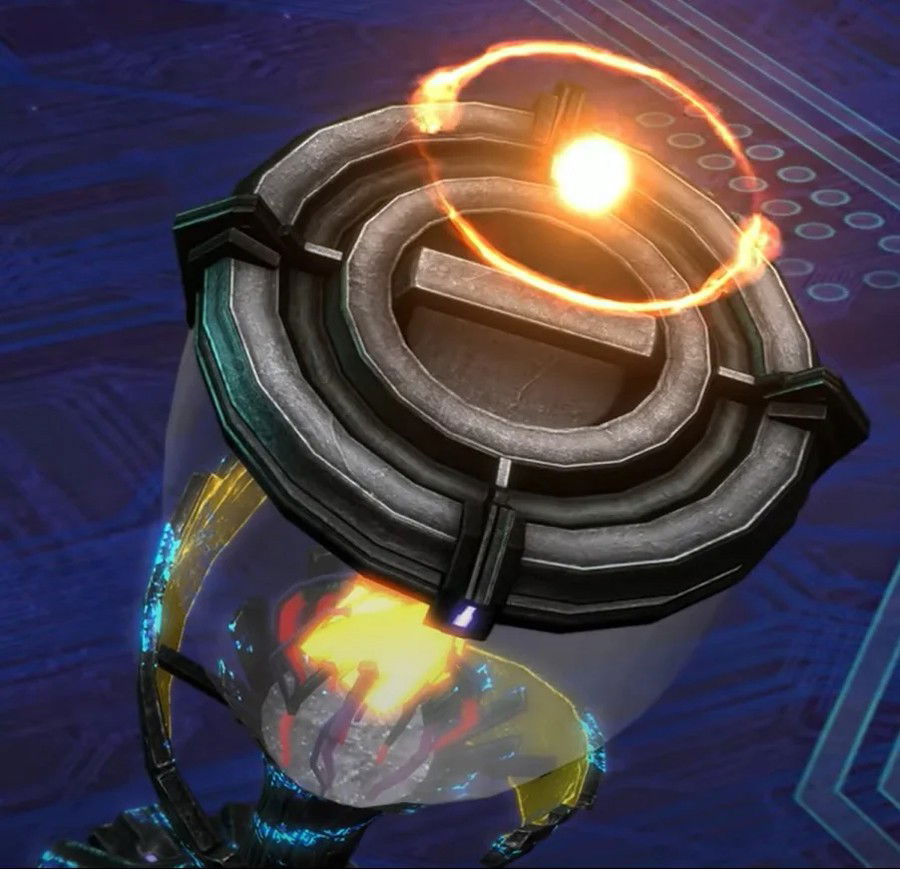
The device used for these trips appear to have similar properties to Azem's crystal, and if so, how was such technology developed by the Milala, and who guided them in this process? To what end or purpose?
Unlike A Realm Reborn, Dawntrail still doesn't leave many spaces open for a direct sequel with a specific enemy, making it possible that Final Fantasy XIV needs two or three more expansions until we have a concrete vision of what the game's second arc is.
This would fit, to some extent, with Azem's own nature, who just went from place to place looking for a new adventure and people to help. While this has always been FFXIV's core proposition since its relaunch, the war against the Garlean Empire and the Ascians helped the story connect, but now that Hydaelyn and Zodiark arc has come to an end, Azem's role to the Ascians and the role of the Warrior of Light may also have ended, making our character just a traveler searching for new experiences.
Conclusion
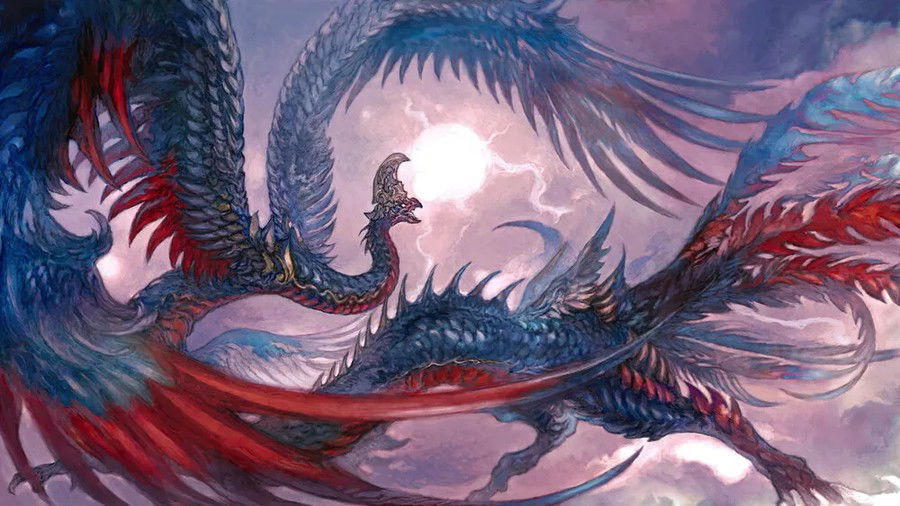
Dawntrail was a unique experience. Its narrative in the form of a pilgrimage, the questions surrounding what constitutes a good ruler and its dilemmas about what a Soul means and/or what defines an individual as “alive” or “dead” brings several themes that fit with the overall narrative while, on the other hand, it's also fresh enough to captivate audiences.
The expansion didn't leave anything to be desired in terms of narrative, even with its intentionally slow start and the absence of the concrete beginning of a new arc.
It certainly carries all the aspects that make it comparable to the other expansions and, in general, it is a step ahead of A Realm Reborn and Stormblood, and maybe even Endwalker if this weren't the fateful conclusion to the previous arc.
Thanks for reading!







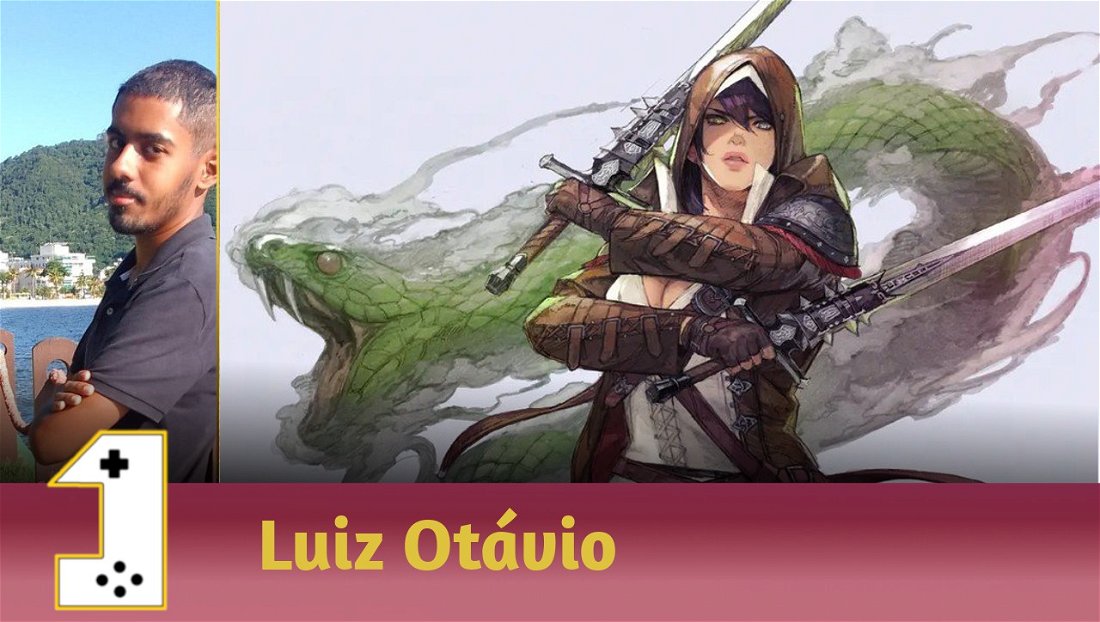
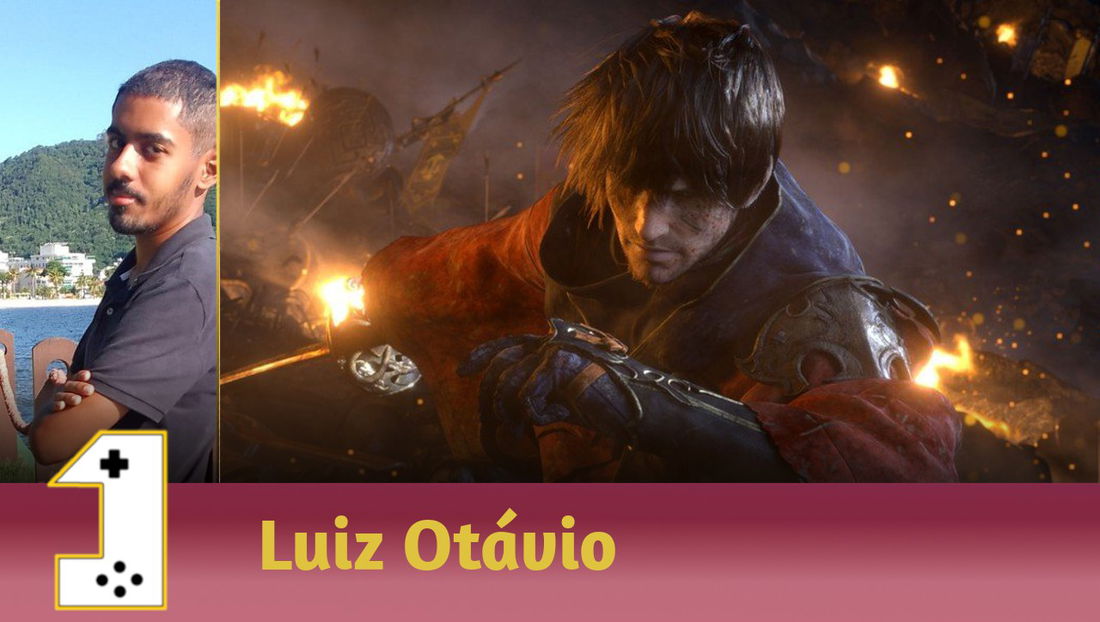



— Comments 0
, Reactions 1
Be the first to comment